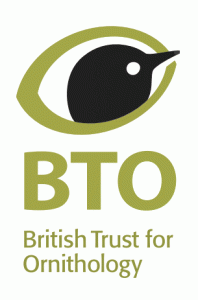What birds can you see in your garden this February?
February is often the most interesting month at our bird feeders. Wild food is at a minimum with few insects and seeds to feed on, so birds which would normally be found in the countryside are more likely to visit our gardens.
The most noticeable of these new visitors are two species of bunting, Reed Bunting and Yellowhammer. Yellowhammers stand out amongst the usual finches and sparrows, with the sulphur coloured heads on the males, and a subtler yellow hue on the females. Reed Buntings are less colourful, but the black head on the males and moustachial stripes on the female should distinguish them from the other brown birds.
1. Reed Bunting

2. Yellow Hammer


- Credit: Photo of Reed Bunting courtesy of BTO, John Harding
- Credit: Photo of Yellowhammer courtesy of BTO, Liz Cutting
Siskins will start to be more apparent as we move towards spring. Smaller than most finches, they are nimble, agile birds. Their numbers in gardens vary greatly from year to year, depending on the amount of pine seed available. If the crop is poor or we see heavy rain, more Siskins are likely to be seen on the feeders.
3. Siskin

If we see snowy weather then be sure to provide for garden birds as this when they are most vulnerable. Even a few apples on the lawn can make a big difference for winter thrushes
What to Feed
-
If you are new to feeding birds, you can choose a ‘year round’ bird food. This is suitable for all seasons and all popular garden birds. Peckish Complete Seed Mix has 12 varieties of high energy seeds and nuts and will attract a wide range of birds
-
If you are keen to attract a specific type of bird, there are specific foods available. For example, a Robin Insect Seed Mix blended with mealworms, naked oats and sunflowers hearts that are small and ideal for a Robin’s beak
How to Feed
-
You will know how much food to put out based on how much is left. If the food is taking days to be eaten, simply reduce the amount you put out
-
Use several feeding stations to reduce the number of birds feeding in one spot
-
If you use a feeding table, make sure to keep it clean
-
Use a ground feeding tray if you prefer to place food on the ground. Just remember to remove any leftover food before nightfall to prevent attracting unwanted visitors
-
Avoid putting feeders under garden features where birds may perch or roost
If you would like to learn more about understanding birds, in particular about changing bird populations visit the charity – British Trust for Ornithology (BTO)



